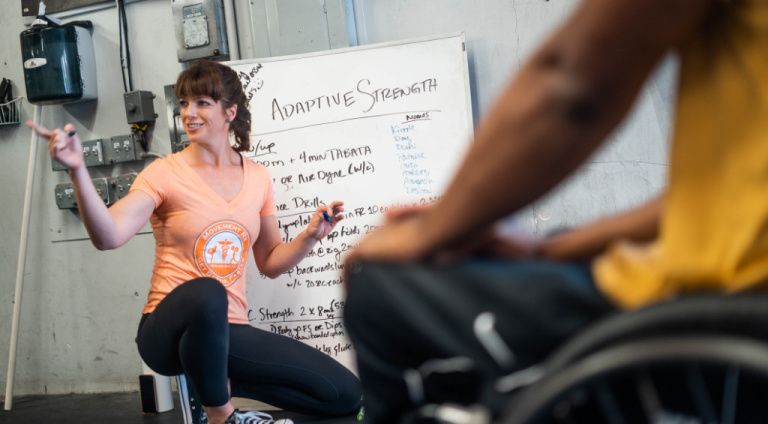Recovering from surgery or injury can be a long and challenging process. However, incorporating adaptive strength training into your rehabilitation can help speed up your recovery and regain your physical abilities. Whether you’re an athlete looking to get back in the game or an individual struggling with daily tasks, adaptive strength training can assist you in rebuilding strength, improving mobility, and preventing future injuries.
The Benefits of Adaptive Strength Training
Adaptive strength training is a specialized exercise program designed to accommodate individuals with limited strength or mobility due to surgery or injury. It focuses on gradually increasing load and intensity while considering the specific needs and abilities of each individual. The benefits of adaptive strength training include:
1. Enhanced Muscle Strength
By engaging in adaptive strength training, you can rebuild and strengthen your muscles. By properly adjusting the intensity and resistance, you can gradually increase your strength without risking reinjury. Stronger muscles not only help in completing daily activities but also improve performance in sports or other physical activities.
2. Improved Range of Motion
After surgery or injury, it’s common to experience a loss of flexibility and range of motion. Adaptive strength training incorporates stretches and exercises that target specific muscle groups, leading to improved flexibility and increased range of motion. This can help restore normal movement patterns and prevent muscle imbalances.
3. Injury Prevention
One of the key objectives of adaptive strength training is to reduce the risk of future injuries. By focusing on strengthening weak muscles, improving balance, and enhancing coordination, the likelihood of reinjury is minimized. Additionally, proper form and technique are emphasized in adaptive strength training to ensure safe and effective exercise execution.
4. Increased Confidence and Mental Well-being
Physical limitations can often take a toll on mental well-being and self-confidence. Adaptive strength training not only enhances physical performance but also boosts self-esteem and confidence. As you progress and see improvements in your strength and ability, you’ll feel a sense of accomplishment, which positively impacts your overall mental well-being.
Creating an Adaptive Strength Training Program
Before initiating any adaptive strength training program, it is essential to consult with a qualified healthcare professional or a certified strength and conditioning specialist. They can assess your specific needs and create a personalized program that suits your goals and limitations.
Here are some general guidelines to keep in mind while designing an adaptive strength training program:
1. Start Slow and Progress Gradually
When recovering from surgery or injury, it’s crucial to begin with low-intensity exercises and gradually increase the load and difficulty level. This allows your body to adapt and prevents any potential setbacks. Your healthcare professional will guide you in determining the appropriate progression rate.
2. Focus on Core Stability
Core muscles play a crucial role in providing stability and support to the entire body. Emphasize exercises that target the core, such as planks, side planks, and bridges. Strengthening the core helps improve posture, balance, and overall functional movement.
3. Incorporate Resistance Training
Resistance training involves using weights, bands, or bodyweight exercises to build strength. Begin with light resistance and gradually increase it based on your progress. Seek guidance from a professional to ensure proper form and minimize the risk of injury.
4. Include Functional Movements
Incorporate exercises that mimic daily movements or activities relevant to your lifestyle. This ensures that your training directly translates into improved functionality in daily life and specific sports or hobbies.
5. Don’t Forget Cardiovascular Training
While focusing on strength training, it’s important not to neglect cardiovascular endurance. Include activities like walking, swimming, or cycling to improve heart health and overall stamina.
6. Monitor Progress and Modify as Needed
Regularly assess your progress and consult with your healthcare professional or trainer to modify the program accordingly. They can help you make adjustments based on your increased strength and limitations, ensuring continued progress without risking reinjury.
Incorporating Adaptive Strength Training into Daily Life
Aside from specific training sessions, there are several ways to integrate adaptive strength training into your daily life:
1. Engage in Active Hobbies
Find activities or hobbies that require physical exertion, such as gardening, hiking, or playing a sport. These activities not only help build strength but also provide enjoyment and motivation to stay active.
2. Modify Daily Tasks
Make necessary modifications to daily tasks to incorporate exercises. For example, while washing dishes, perform calf raises to strengthen your lower legs. Be creative and find ways to challenge your muscles during routine activities.
3. Practice Balance and Stability
Incorporate balance exercises into your daily routine, such as standing on one leg while brushing your teeth or using a balance board while working at a standing desk. These exercises help improve stability and enhance overall body control.
4. Stay Consistent
Consistency is key when it comes to adaptive strength training. Aim for regular exercise sessions, adhere to your program, and gradually increase the intensity over time. By staying consistent, you’ll maximize the benefits and expedite your recovery process.
Conclusion
Adaptive strength training is a powerful tool for individuals recovering from surgery or injury. With its numerous benefits, including enhanced muscle strength, improved range of motion, injury prevention, and increased confidence, adaptive strength training can aid in a swift and successful recovery.
Remember to seek professional guidance, start slow, and gradually progress in order to adapt your strength training program to your specific needs and limitations. By incorporating adaptive strength training into your daily life, you’ll promote both physical and mental well-being, helping you regain your strength and live life to the fullest.

